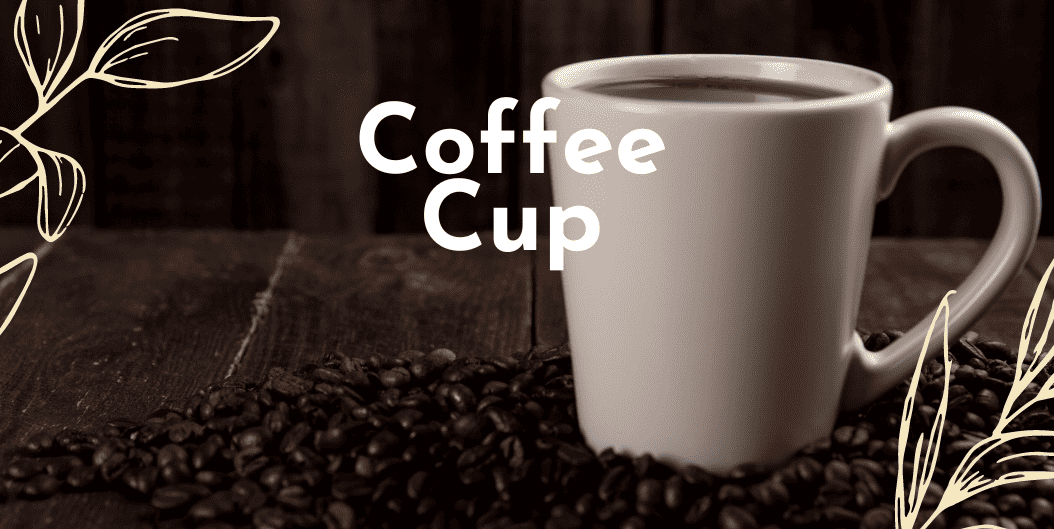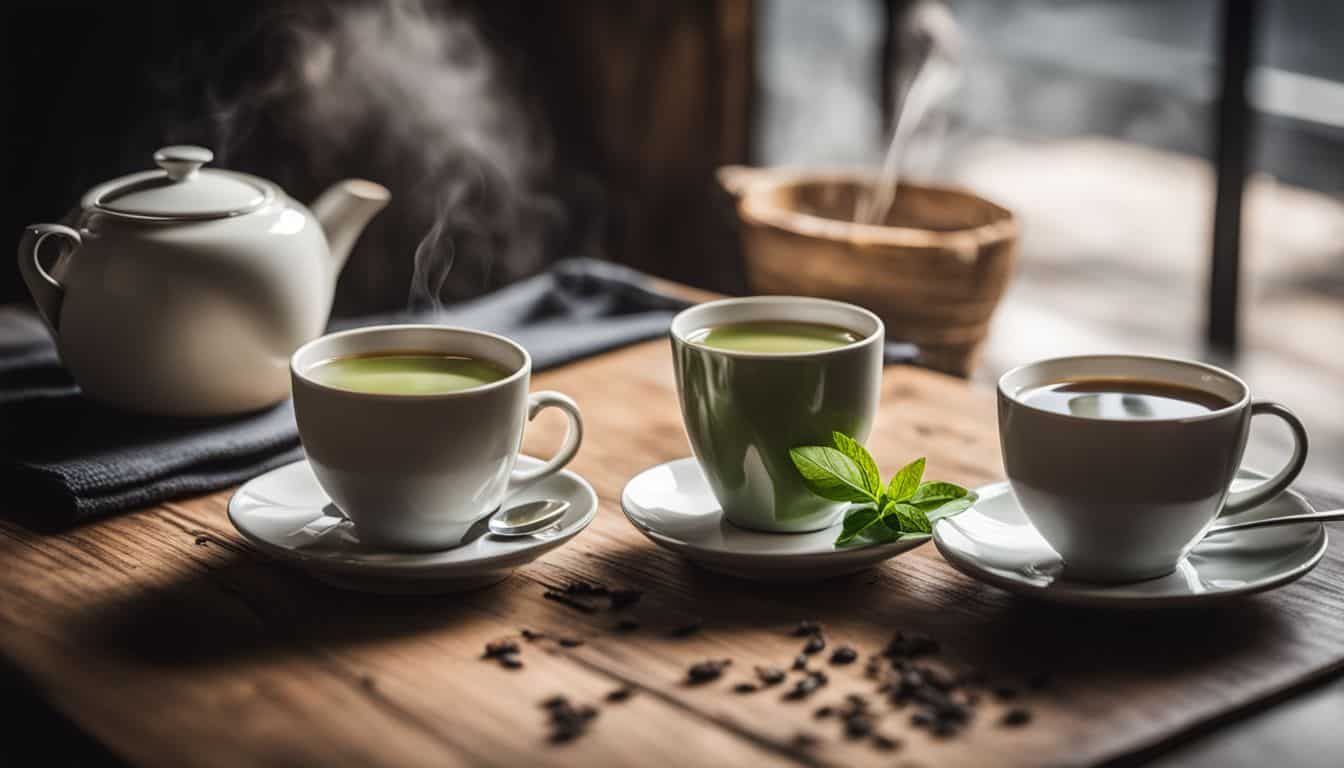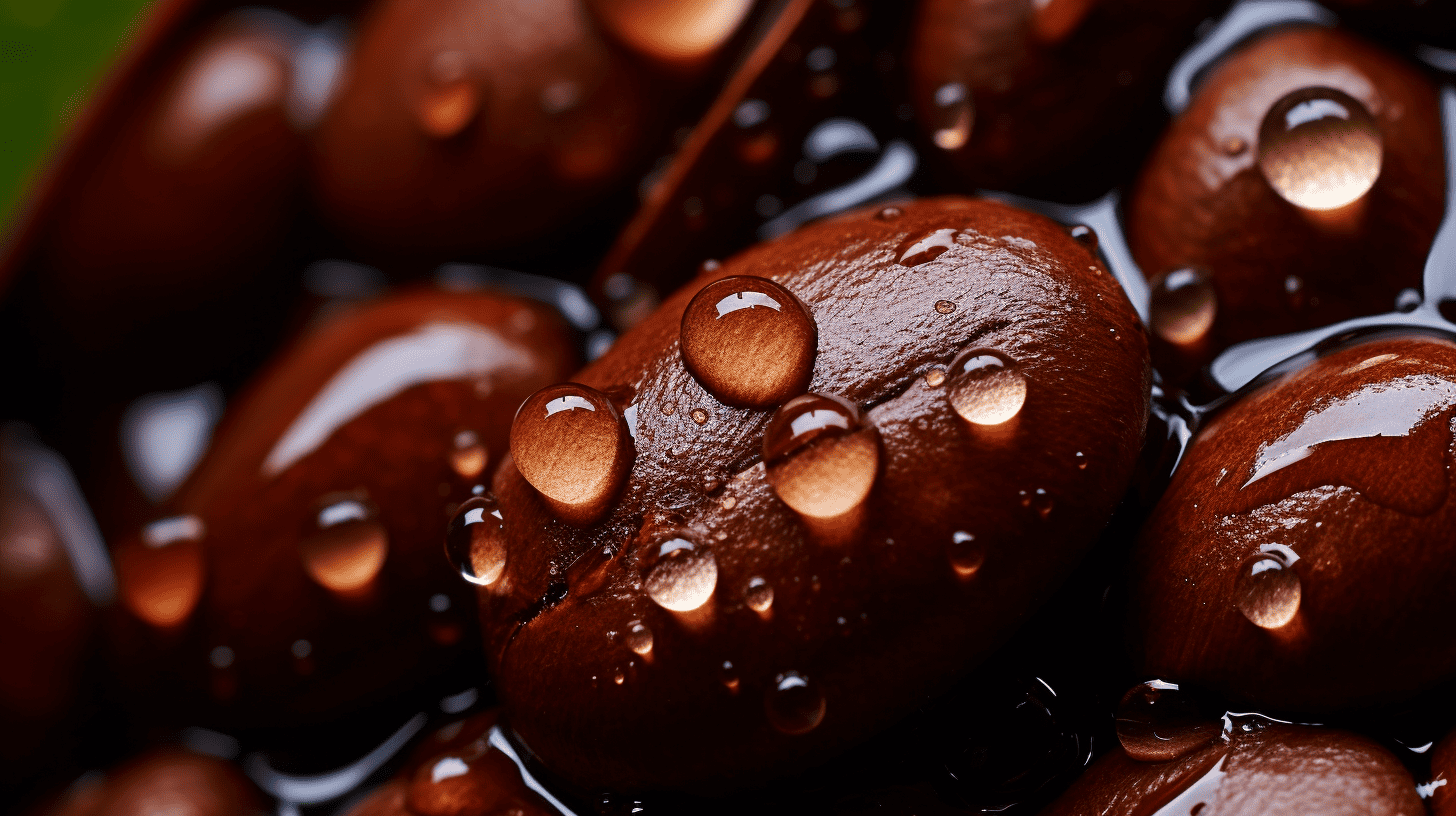I don’t know about you, but I love coffee. There’s just something about that rich, bold flavor that gets me going in the morning. But when measuring out my coffee, I always get a little confused. How much is 1 coffee cup to ml? It’s a question that’s been bugging me for a while, so I decided to research. For a US 8-ounce cup of coffee, the millimeter conversion is 236.58.
After a bit of digging, I’ve learned that the answer is pretty simple. Converting cups to milliliters is just a matter of understanding the relationship between the two measurements and doing some math. In this article, I’ll walk you through the steps to make accurate coffee measurements and give you some tips and tricks to make the process as easy as possible. So let’s get started!
Understanding the Relationship Between Cups and Milliliters
By learning how many milliliters fit into different cup sizes, you’ll better understand the relationship between the size of a cup and the amount of liquid it can hold. Comparing coffee cup sizes can be quite tricky, as the volume of liquid a cup can have varies significantly. For instance, a standard coffee cup can hold up to 236.59 milliliters of liquid, while a jumbo coffee cup can hold up to 473.18 milliliters of liquid.
Understanding fluid ounces can help you comprehend the relationship between cups and milliliters. A fluid ounce is a unit of measurement commonly used in the United States to measure liquid volume. One fluid ounce is equivalent to approximately 29.57 milliliters. Therefore, if a standard coffee cup can hold up to 8 fluid ounces of liquid, it can hold approximately 236.59 milliliters of liquid.
To convert cups to milliliters, you must clearly understand how much liquid a cup can hold. Once you know the fluid volume that a cup can have, you can easily convert it to milliliters. In the next section, I’ll show you how to convert cups to milliliters using a simple formula.
How to Convert Cups to Milliliters
In this section, we’ll learn how to transform cups into tiny streams of liquid gold. Converting other common coffee measurements, like tablespoons and ounces, to milliliters can be confusing, but with a little practice, you’ll be a pro in no time. Understanding the importance of accurate measurements in coffee brewing is crucial to always achieving the perfect cup.
To convert cups to milliliters, you must know that one cup equals 236.5 milliliters. It’s important to note that not all cups are created equal. A standard US cup is 8 fluid ounces, while a metric cup is 250 milliliters. When following a recipe, be sure to use the correct cup measurement specified to ensure the intended flavor and strength of your coffee.
To make things even easier, you can use a conversion calculator or chart to quickly and accurately convert your measurements. Simply input the number of cups, and the calculator will give you the equivalent amount in milliliters. With this knowledge, you’ll have the power to make consistently delicious coffee every time.
As you can see, converting cups to milliliters is a simple process that can make a big difference in the quality of your coffee. But we’ll explore other factors to consider when converting coffee measurements in the next section. By understanding these factors and mastering the art of measurement conversion, you’ll be well on your way to becoming a coffee brewing expert.
Coffee Brewing Ratios Usign Grams Explained
Summary of Creating the Perfect Coffee Ratio:
- Using volumetric measurements like scoops or cups for coffee brewing can lead to inconsistencies in the amount of coffee used due to variations in weight.
- Grams per liter (g/L) is a recommended ratio for coffee brewing as it provides a more reliable and consistent measurement.
- Ratios like 1:14 or 1:15 help determine how much coffee can be made with a certain amount of ground coffee. Still, they may not be convenient for calculating the amount of ground coffee needed for a desired volume of brewed coffee.
- Mixed unit ratios, such as grams per ounce, are not recommended as they involve a combination of Imperial and metric measurements.
- The coffee-to-water ratio determines the strength of the brewed coffee, and there is no correct ratio as it depends on personal preference.
- Extraction, the process of dissolving soluble coffee compounds, plays a role in the strength of brewed coffee. Adjusting extraction factors like grind size, brew time, and agitation can affect the taste before changing the coffee-to-water ratio.
- For infusion methods (e.g., French press, AeroPress), using slightly more coffee per liter of water is recommended compared to percolation methods (e.g., pour-over) to compensate for water absorption by the coffee grounds and maintain similar extraction and strength.
- Recommended starting points for the coffee-to-water ratio are around 60 grams per liter for pour-over and 75 grams per liter for infusion methods, but individual preferences may vary.
- Weighing the coffee and water using scales provides consistency and a better understanding of the brewing process.
Factors to Consider When Converting Coffee Measurements
Understanding the various factors to remember when converting measurements is essential for achieving the perfect balance of flavors in your brew. Converting other coffee measurements, such as tablespoons or fluid ounces, to milliliters can be daunting. However, converting coffee cup measurements to milliliters is a bit simpler. The standard coffee cup size varies from 6 to 8 ounces, meaning a cup can range from 177.44 to 236.59 milliliters.
The importance of accurate measurements in coffee brewing cannot be overstated. Precision is critical in making the perfect cup of coffee. Adding too much or too little water can affect your coffee’s taste and aroma. To achieve consistency in your coffee brewing, you must ensure precise measurements. This is where the conversion guide comes in handy.
Using the conversion guide for your coffee brewing is easy. Multiply the number of cups you need by 236.58 to get the number of milliliters. So, if you need 2 cups of coffee, you must measure 473.16 milliliters of water. You can be sure your coffee will have the right flavors and aromas with accurate measurements.
Using the Conversion Guide for Your Coffee Brewing
If you want to perfect your coffee brewing, it’s essential to use the conversion guide for accurate measurements – did you know that even a slight difference of 5 milliliters can significantly affect the taste of your brew? Using the right amount of water and coffee for your brewing method is crucial in achieving the perfect cup of coffee. The benefits of coffee brewing are endless, starting with accurate measurements.
Different types of coffee brewing methods require different ratios of coffee to water. For instance, pour-over coffee requires a 1:15 coffee-to-water ratio, while French press needs a 1:16 ratio. Using the conversion guide for your specific brewing method will help you achieve consistency in your coffee, and you won’t have to deal with the frustration of an under-extracted or over-extracted cup.
Using the conversion guide, you can easily calculate the coffee you need for the cups you want to brew. You’ll also be able to measure the exact amount of water needed for each cup. With accurate measurements, you’ll have control over the strength and flavor of your coffee. In the next section, I’ll share some tips and tricks for precise coffee measurement conversions to help you create the perfect cup of coffee every time.
Tips and Tricks for Accurate Coffee Measurement Conversions
When it comes to measuring coffee, there are a few fundamental techniques that can help ensure accuracy. First, using a scale rather than relying on volume measurements like tablespoons is essential. This will provide more precise measurements and help you achieve consistent results. Adjusting for precision by using decimals instead of rounding up or down can also make a difference in the final product. Lastly, common mistakes like using the wrong size measuring cup or inconsistent packing can throw off your measurements, so it’s important to be aware and make adjustments as needed.
Measuring Techniques
To get a precise measurement, you can easily measure the amount of liquid in your mug using a simple kitchen tool, like a spoon or a syringe. Measuring accuracy is crucial when it comes to coffee brewing. A slight variation in the amount of coffee can completely change the taste and strength of the brew. Here are some measuring techniques that can help you achieve the perfect cup of coffee every time:
- Use a digital scale: This is the most accurate way to measure coffee. Simply weigh the coffee beans or grounds to get the exact amount needed.
- Use a measuring spoon: Measuring spoons are an easy way to measure coffee grounds. Use a tablespoon to measure the exact amount of coffee for your brew.
- Use a syringe: A syringe is a precise tool for measuring liquids. Use it to measure the exact amount of water needed for your brew.
Different measurement systems can also affect the accuracy of your coffee measurements. In the US, coffee is commonly measured in tablespoons, while in other countries, it is measured in grams. Make sure to convert your measurements accurately to achieve the perfect cup of coffee.
Adjusting for Precision
Adjusting your measuring techniques for precision to achieve the perfect cup of coffee is essential. This means using tools like a digital scale, measuring spoon, or syringe to ensure accurate measurements every time. When converting coffee cups to milliliters, it’s important to consider the rounding decimals and metric system alternatives.
To make things easier, here’s a table that shows the standard measurements for coffee cups and their equivalent in milliliters:
| Coffee cup size | Milliliters |
|---|---|
| 1 cup | 236.59 ml |
| 1/2 cup | 118.29 ml |
| 1/3 cup | 78.84 ml |
By using precise measuring techniques and converting accurately, you can ensure that your coffee tastes just as good every time. However, even with precise measurements, there are still common mistakes to avoid when brewing coffee.
Common Mistakes to Avoid
Avoiding common mistakes is essential for achieving a delicious and consistent cup of joe. One of the most common mistakes people make when measuring their coffee is using the incorrect unit conversion. For example, if you are trying to convert 1 cup of coffee to mL, you must use the correct conversion factor. Using the wrong conversion factor can result in an inaccurate measurement, leading to a less-than-perfect cup of coffee.
Paying attention to the details is important to avoid the consequences of inaccurate measurements. Here are a few common mistakes to avoid:
- Using the wrong conversion factor
- Forgetting to level off your measuring spoon or cup properly
- Not using a scale to measure your coffee
- Failing to account for the amount of water in your coffee maker
By avoiding these common mistakes, you can ensure that you measure your coffee accurately and consistently, resulting in a delicious cup of coffee every time. Remember, paying attention to the details is key when it comes to making the perfect cup of coffee.
Frequently Asked Questions
What is the standard size of a coffee cup?
Regarding types of beverages, coffee is a fan favorite. But have you ever wondered what the standard size of a coffee cup is? Well, let me tell you, it varies. There are different types of coffee cups, ranging from small espresso cups to large mugs. And when it comes to standard measurements, it can be a bit confusing.
Some countries use metric measurements, while others use imperial measurements. However, most standard coffee cups hold around 8-12 ounces of liquid. But with the ever-growing demand for innovation, coffee cups are becoming more unique and customizable. From collapsible cups to temperature-controlled mugs, there’s no limit to the possibilities. So, who knows what the standard coffee cup size will be? Only time will tell.
How do different types of coffee affect the conversion from cups to milliliters?
As a coffee enthusiast, I’ve experimented with various brewing techniques and explored different coffee bean origins. I’ve noticed that the type of coffee used can affect the conversion from cups to milliliters. For example, a lighter roast may have a higher water content, resulting in a slightly larger cup size, while a darker roast may have a more concentrated flavor with less water, resulting in a smaller cup size.
Additionally, the brewing method also plays a role in the final volume of the cup. By adjusting the grind size, water temperature, and extraction time, you can create a cup that is tailored to your preferences. With so many possibilities, exploring the world of coffee can be a never-ending journey of innovation.
Can the conversion guide be used for other types of liquid measurements besides coffee?
When converting liquid measurements, using kitchen scales can be a game-changer. Not only does it provide a more accurate measurement, but it also eliminates the need for multiple measuring cups and spoons. Common conversions like ounces to milliliters or cups to liters can quickly be done with the help of a kitchen scale. And the best part is that this conversion guide can be used for other liquids besides coffee. So, if you love to experiment with different recipes and ingredients, a kitchen scale should be a staple in your kitchen. Innovation starts with minor changes, and using a kitchen scale for liquid conversions is one of those changes that can make a big difference in your cooking and baking game.
Is it necessary to use a specific type of measuring cup for accurate conversions?
When it comes to measuring accuracy, using a specific type of measuring cup can make a big difference. Conversions with different units can be tricky, and using the wrong measuring cup can throw off your calculations. I’ve found that investing in a set of measuring cups with clear markings and accurate measurements has made a huge difference in the accuracy of my recipes. Plus, it’s always exciting to discover new ways to innovate in the kitchen, and using the right tools is just one way to do it. So if you’re looking to up your measuring game and take your cooking to the next level, consider investing in a set of high-quality measuring cups.
Are there any common mistakes people make when converting coffee measurements from cups to milliliters?
Oh boy, let me tell you about some of the common errors people make when converting coffee measurements from cups to milliliters. It’s like they’re playing a game of telephone, but instead of whispering a secret, they’re just butchering a perfect cup of coffee. One mistake is using the wrong measuring cup. I mean, come on, people, it’s not rocket science. Another is not understanding the basic conversion rate between cups and milliliters.
But fear not, my fellow coffee enthusiasts; I have some helpful tips to ensure your coffee stays on point. First, invest in an excellent measuring cup and make sure you know the conversion rate (1 cup = 236.6 ml). And if all else fails, eyeball it – because who needs precision when you have a good cup of coffee, am I right? Just kidding, please measure your coffee.
Conclusion
So there you have it, folks! Converting coffee measurements from cups to milliliters is a simple process that can greatly improve the accuracy and consistency of your coffee brewing. By understanding the relationship between cups and milliliters and using the conversion guide provided, you can easily measure out the perfect amount of coffee for your desired brew.
But don’t forget, there are also factors to consider, such as the type of coffee you’re using and your personal taste preferences. So while the conversion guide is helpful, don’t be afraid to experiment and adjust your measurements to find the perfect cup of coffee for you. Happy brewing!





Leave a Reply